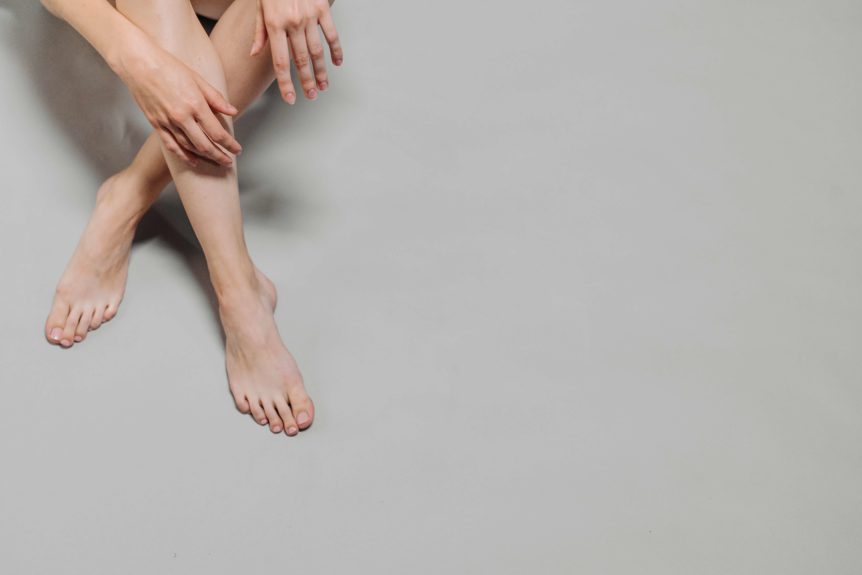Yick. Bleh. Gross. Ugh. That’s the reaction most of us have to skin warts, especially when they appear on our bodies. Generally, we find such abnormal skin growths unsightly, annoying, embarrassing. If you have them, you likely want them gone.
What and Why Skin Warts Happen
Warts are small, fleshy bumps that can appear anywhere on the human body; they’re most common on hands, feet, and areas of broken skin. The cause is human papillomavirus or HPV. Warts occur when certain skin cells on the epidermis (top layer of skin) grow faster than normal because they are infected with HPV.
HPV is everywhere and exposing us constantly: shaking hands, hugging, touching a doorknob, using a phone, walking shoeless in a locker room, sharing a towel – all are potential points of contact. More than 100 HPV strains have been identified; of those, ten are linked to skin warts. Which doesn’t mean your developing warts is inevitable, even though HPV is transmissible by touch and warts are caused by direct contact with HPV.
For reasons experts don’t understand, warts are unpredictable. The virus may reside in your epidermis for years, then suddenly erupt into a growth. Or you can be directly exposed and never develop warts. Or the virus lingers in your skin after a wart goes away, but nothing further happens. The difference may have to do with the amount of HPV immunity built up by each person’s system. Warts can affect people of any age but often appear in children 12 to 16 years old, perhaps because their immune systems are not well-developed. Overall, 20% of schoolchildren and 10% of the general population are estimated to have warts. People of any age with immune systems weakened by illness, medical procedures, or transplants are at higher risk.
Three types of cutaneous or skin warts account for most growths.
Types of Skin Warts
| Type | Appearance | Description |
|---|---|---|
| Common | Protruding growth with raised, rough, thick surface, 1 to 10 millimeters in size. Skin-colored to gray-brown, often with capillaries showing as dark specs. | Found mostly on hands and fingers, but may appear anywhere on the body. |
| Plantar | Hard, grainy, or fleshy growth on heels, balls, other weight-bearing areas of feet. Often forced flat or inward beneath a thick layer of skin. Gray or brown with dark specks. | Found only on soles of the feet. Clustered plantar warts are called mosaic warts. May cause pain when walking, running, or exercising. |
| Flat | Flat or slightly raised, small in size. Smooth and pink, nearly flush with surface of skin. | Found mostly on face, hands, shins. Less common than other types but may appear in large, clustered groupings. |
Filiform or facial warts are relatively rare; these are long, narrow projections around the eyelids and lips that extend 1 to 2 millimeters from the skin. In intimate areas of the body, genital warts may appear.
Considering Treatment Options
The good news is that skin warts are usually harmless. In fact, the majority disappear on their own, so watching and waiting may be your best way to go. Since that process can take as long as two years, you may want to take action sooner, either on your own or by seeing your doctor or dermatologist.
Self-remedy choices are plentiful.
Over-the-counter preparations containing salicylic acid (which also happens to be the main ingredient in aspirin) are your first and most effective choice. These come in a variety of topical applications, including gels, liquids, patches, and sprays, with familiar brand names like Compound W, Dr. Scholl’s, Equate, WartStick, Walgreens, CVS, and more. Treatment involves soaking a wart in the shower or bath, filing away dead skin with an emery board or pumice stone, applying the salicylic acid, covering the growth with a patch, and repeating daily.
Some anecdotal evidence suggests covering a wart with silver duct tape for six days at a time prompts removal, perhaps by depriving the growth of oxygen or removing viral particles along with the tape.
Whatever the approach, be patient – clearing the wart may take a while.
Professional intervention may be indicated.
In some cases, medical attention is advisable, especially for a wart that bleeds, grows quickly, or multiplies, potentially indicating cancer or another serious skin condition. Plantar warts that are painful or impede normal movement may warrant a visit to the doctor. Genital warts also should be evaluated professionally. In some instances, cosmetic concerns are primary, which is a perfectly valid reason for seeking help.
Clinicians have several options for dealing with warts, including cryotherapy (freezing), electrodesiccation (burning with an electric implement), excision (surgical removal), or laser treatment. Prescription agents may sometimes be indicated. The choice depends on circumstance, type and location of wart, and professional preference.
Reducing Risk
Remember that warts are caused by direct exposure to an HPV virus via contact with an existing growth, another person, or infected item. Since HPV viruses are everywhere, avoiding them completely is impossible, although good health practices may cut down on spread of warts. Some suggestions:
- Wash and sanitize hands frequently
- Clean and cover cuts or breaks in the skin
- Cover a wart to limit contact with HPV
- Avoid touching or scratching warts, whether yours or someone else’s
- Do not share towels, washcloths, shoes, socks, combs, nail clippers, razors, and other personal items, even in your own home
- Do not brush, comb, shave, or clip hair in areas with warts
- Stop nail biting and cuticle chewing
- Wear sandals or flipflops in communal spaces like pools and locker rooms to protect feet against HPV on floors or other surfaces
While seldom dangerous, warts can be unpleasant and aggravating. Fortunately, you can treat a wart successfully, so stay positive and be assured that eventually that pesky growth will go away.

